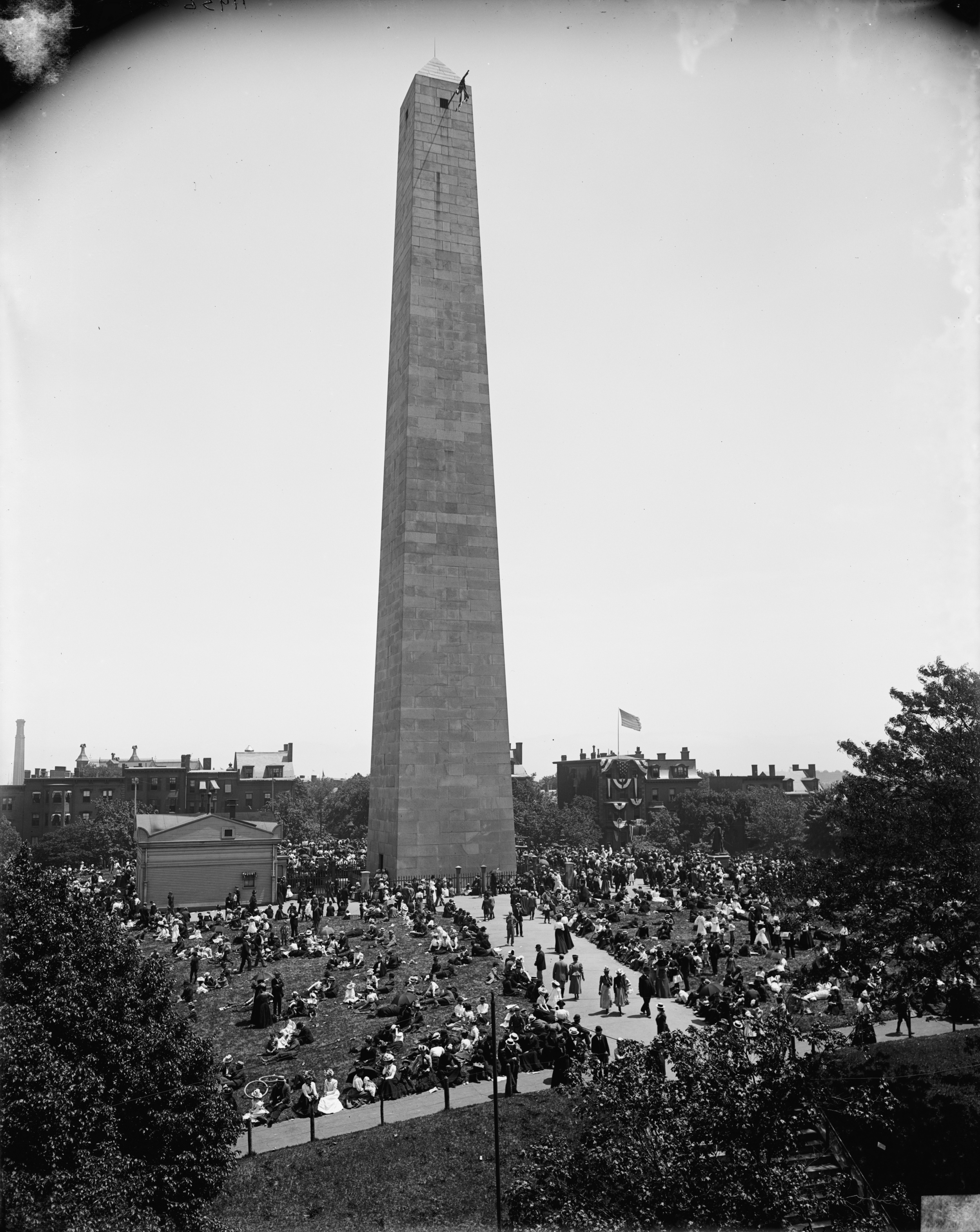Travel Experience: The Intimacy of the Family Vacation
Maybe we had reached step 200 when a middle-aged woman came waddling down the narrow staircase with her pre-teen daughter and kindly told us, "It's 294 steps." I kept repeating the number in my head. We were almost, kind of, almost there. My heart raced a little faster, breaths came a little harder with each ascending step. We were hoofing our way to the top of the Bunker Hill Monument — our penultimate stop along Boston's Freedom Trail. With my sister and brother-in-law ahead of us, Stephen and I continued our progress, not wanting to miss the possibility of an outstanding view of the city.
The Bunker Hill Monument during the Bunker Hill Day celebrations in Charlestown, Mass. sometime between 1890 and 1901. Image from Wikimedia.
For those less familiar, the Freedom Trail literally makes a 2.5-mile red line through the historic sites of Beantown's colonial past. Sometimes it's painted on asphalt, sometimes it's a narrow, brick-lined path, but we followed almost every step of it, starting in the Common, maneuvering past the State House and through at least two historic burial grounds. We got lunch at Quincy Market behind Faneuil Hall, toured Paul Revere's house, and saw the church where the lanterns hung declaring the British arrival by sea. After the hike up the obelisk at Bunker Hill, things wrapped up with an exploration of the USS Constitution. While two and a half miles doesn't sound especially long, this footpath also marked the final day of our family vacation in Boston. On this last day before we drove down to New Jersey for my graduation from Rutgers there was a sense that we needed to make the most of every possible moment and leave no stone unturned, even if it was raining most of the time.
In addition to my parents and sister, this trip marked the first family vacation to include two new family members — my brother-in-law Joel and husband Stephen. (Unfortunately, my brother had to be in Colorado for a wedding, so we were down a man.) When I was thinking about our time in Boston as a travel experience, though, it occurred to me that family vacations and family-oriented travel don't often make it into our reflections on meaningful travel. Those narratives are usually occupied by the individual adventurer who wanders into some uncertain yet exciting terrain. The family politics of where to go for lunch, how to get there, and who gets to set the temperature on the thermostat — not to mention the possibility of childhood rivalries rearing their ugly heads — don't create a sense of wanderlust for the reader or the writer. We might love to laugh at Clark Griswold and his travel disasters behind the wheel of the family station wagon, but not too many would pay to ride along. For most of us, though, these are our travel stories. Saving for that holiday trip to see grandparents, making sure we have a little emergency fund stashed away in case a sibling's baby comes early or there's a complication with a loved one's surgery — these are the real, everyday, unglamorous travel experiences that comprise so many lives.
While family travel moments don't always have the flash and polish that we see on glossy magazine pages, they carry that basic element that makes travel meaningful in all its varied forms. Travel breaks our routines, forces us to see the world in a new way, makes us reconsider how we understand home and what we love about it. If we're honest with ourselves, spending time with family can have the same effect. Traveling with family merges two boundary-breaking experiences — creating a corporate experience that hopefully draws us closer together because we've tasted the same new foods, seen the same sites, laughed about them, and maybe whined a little too. While doing all that, we were in the company of the people who know the ins and outs of some of our deepest personal moments. The family vacation could be among our most intimate shared life experiences.
After completing our ascent at Bunker Hill, more than the view, I remember the inescapable soreness we each felt in our legs for several days afterward. As Joel put it, there was a "ball of pain" encased in each calf. Maybe our shared build up of lactic acid doesn't make for an ideal travel story, but it's an important family story. One where a few years from now we'll remember and laugh about how painful it was to walk down even a few steps the next day, and the day after that. Those of us who love to travel get hooked on how the experience of a new place adds another facet to our sense of being human. Just as travel makes the person, the vacation — for better or worse — helps make the family. We didn't each see the Freedom Trail in the same way. But trek through Boston for the better part of day, make it rainy, a little cold and physically taxing, and you have six people who emerge with a deeper sense of who they are as a single entity, who we are as a family.

